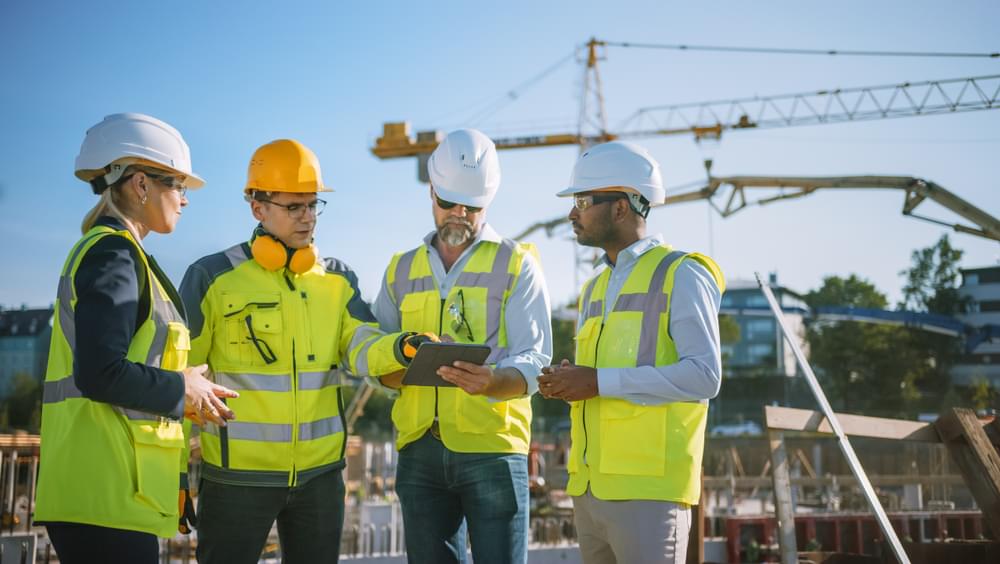We live in strange times – a saying perhaps never more used than over the last 16 months. As we look forward to a post-COVID normality, is normality what we will get? The construction industry has seen materials price increases across a whole range of areas, giving the highest increase for 15 years. What’s causing this sudden spike in prices and how do we navigate through this period of uncertainty?
Economic modelling by the Bank of England and others has revealed that our economy is now being impacted by many “new” things which we need to consider. Some estimate that consumers have built up £140bn of additional savings during 2020 through reduced travel, eating out and generally not living a full life during lockdown.
Predicting what people will do with this surplus cash is creating uncertainties. In the scenario where people come out of lockdown with a spend, spend, spend mentality to enjoy all the things they missed, the Bank of England has considered the possibility of overheating and excessive inflation occurring.
We have been told to fear jobs carnage as government support is withdrawn via furlough, rates relief and loan schemes. As we stand here in mid-2021 we are experiencing some labour shortages and wage inflation we’ve not seen for some time. Officially average earnings in the three months to April were up 5.6% on a year earlier (+8.4% in April alone).
This is now a major topic of concern within the wider economy and our own construction industry. The data is catching up and Consumer Price Inflation (CPI) jumped to 2.1% last month from 1.5% in April and is now above the official 2% target. Industry raw materials and fuel costs rose by 10.7% in the year to May – the largest annual rise for 10 years.
The 15-year high materials price increases we are seeing have been brought about by a combination of supply restrictions, caused by shutdowns in manufacturing whilst demand from construction sites was maintained as a priority by government, coupled with a rapid recovery in the sector - and some import and shipping complications thrown into the mix thanks to Brexit.
The ongoing construction materials shortage is set to continue and prices could keep rising, the Construction Leadership Council (CLC) has warned. The Builders Merchants Federation and the Construction Products Association have said that high demand coupled with tight supply will sustain elevated prices throughout the year. Independent commentators suggest no improvement is expected before Q1 2022, and the summer holiday maintenance season and traditional European closures could make it worse. Projects needing to procure key affected trades such as timber or steel structures now are in the eye of the storm.
Labour availability is also under pressure with many non-UK operatives having left the country through Brexit or COVID. Wage increases are also being reported across trade, some specialists by as much as 50%.
For contractors used to signing fixed price contracts over two to three year periods, the risk of having to absorb supply chain cost risk will threaten margins and perhaps worse, reaching beyond simply costs but increasing strategic risks in the supply chain such as modern slavery, provenance of materials and existential risk with smaller supply chain members. All sobering thoughts.
So is the stable, low inflation, low interest rate economy we have grown used to at risk? Periods of the 1970s and 1980s saw inflation hitting 25% and 15% respectively. Those of us that have worked in the construction industry for three decades or more remember a time when fluctuating contracts were as common as fixed price contracts. Then there was a choice of invoice based or index based adjustment (remember NEDO price adjustment formulae). Monthly valuations involved an assessment of material price changes.
We at Gardiner & Theobald do not believe we are returning to those measures. With supply chains responding and procurement behaviour changing, the current supply constraints are considered more of a bottle neck rather than the “new normal”. Our advice is to hold your nerve in this transitional environment whilst taking additional risk control measures on your projects.
We are advising our clients to consider our 10 key actions to ensure their projects remain on track:
- Regularly test cost plans. Do not rely on UK average TPI quarterly indices to adjust cost plans produced in 2020 or early 2021 as short term price movements in key trades have been rapid. Re-price cost plans with reference to the market and suppliers in real time.
- Plan ahead and be open about project pipeline with your suppliers.
- Engage with the market early in order to gauge capacity and appetite and identify resource constraints and longer than normal lead-in periods.
- Consider design solutions that provide viable alternatives to constrained materials.
- Be prepared to commit to key trades early potentially before main contracts are awarded.
- Expect requests for advance payments to secure materials and capacity. Consider offering these to secure price fixity but ensure title and vesting is secured.
- Be prepared to enter into discussions with contractors about risk sharing on key rates and be creative with jointly owned risk pot provisions.
- Discuss with contractors plans to forward supply and for storage of key materials rather than “just in time deliveries”.
- Identify potential storage areas that may be available, for stock piling or advance purchasing.
- Carefully monitor materials deliveries to sites and independently assess any effects on contractors’ programmes. Be alert to concurrent materials supply issues alongside delay events.





